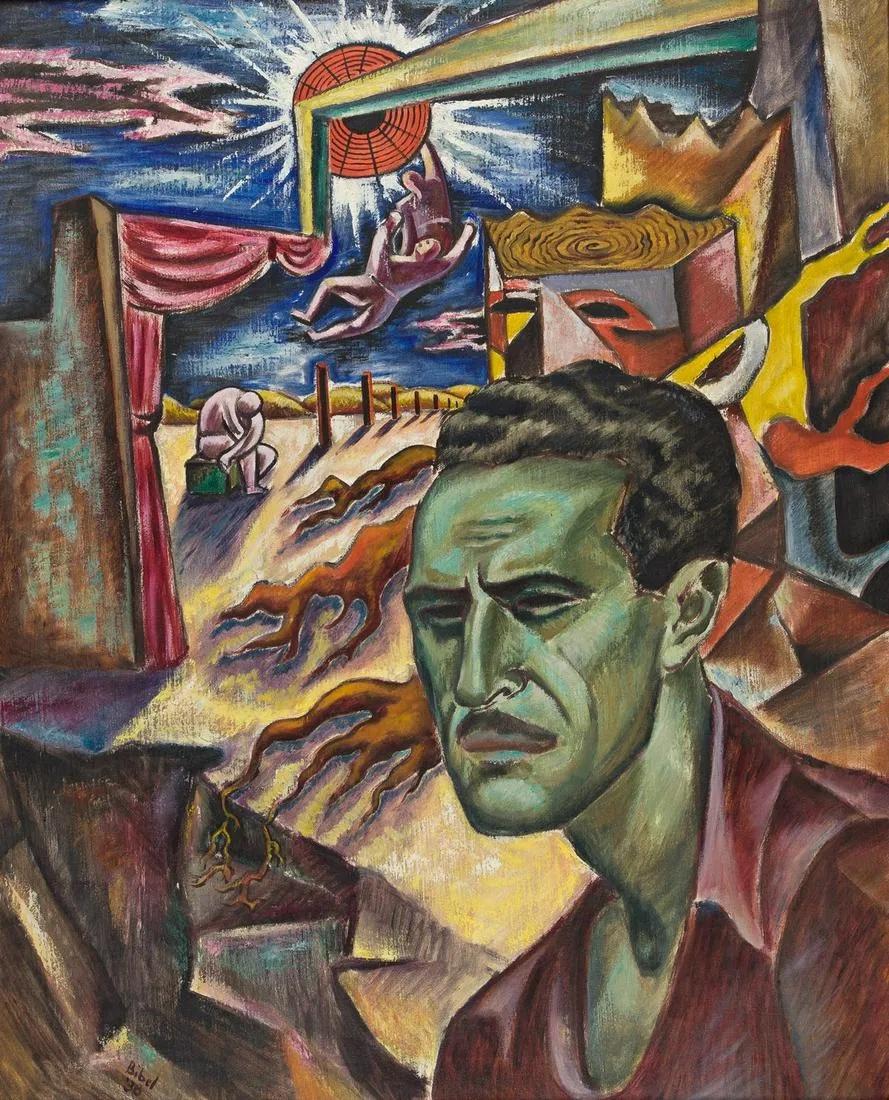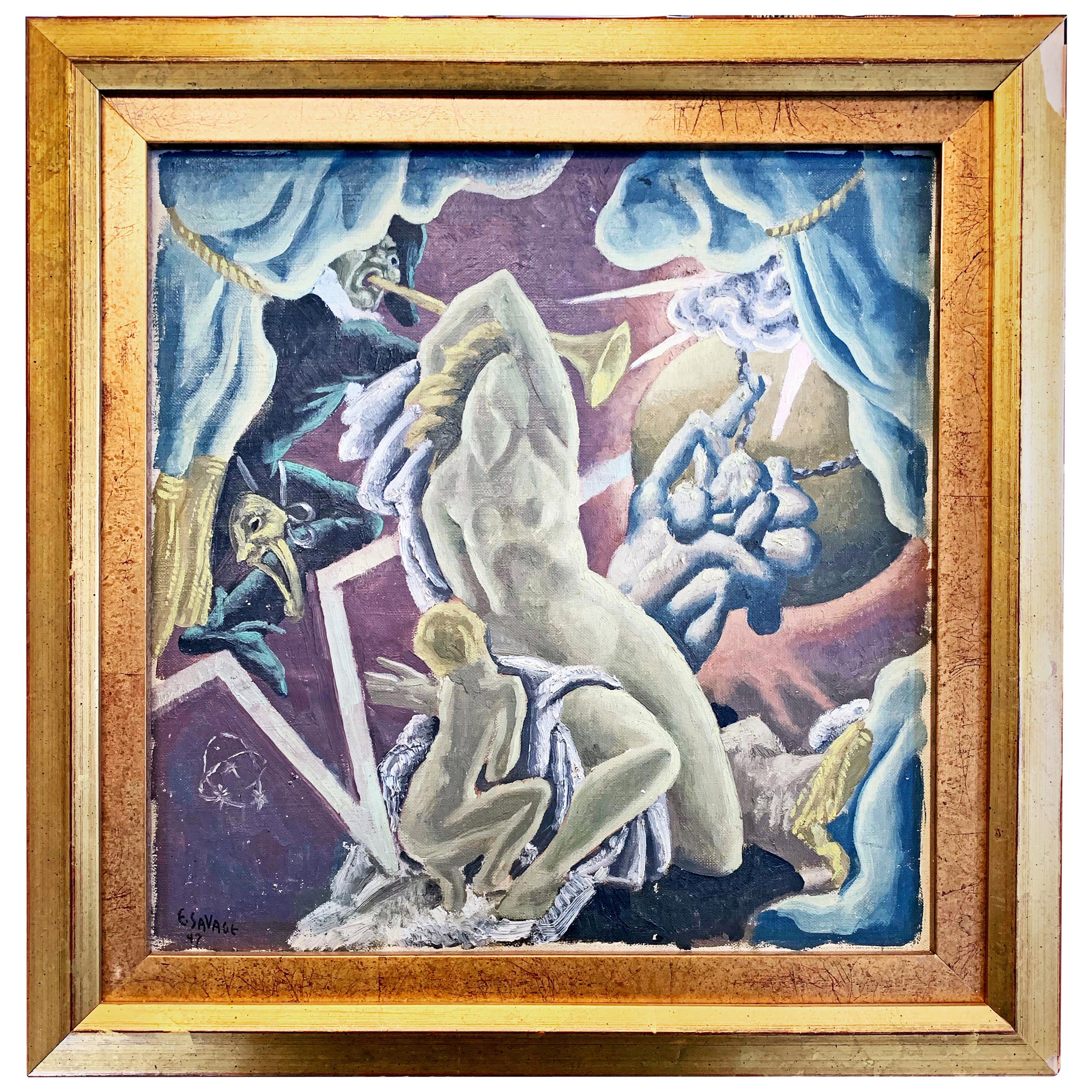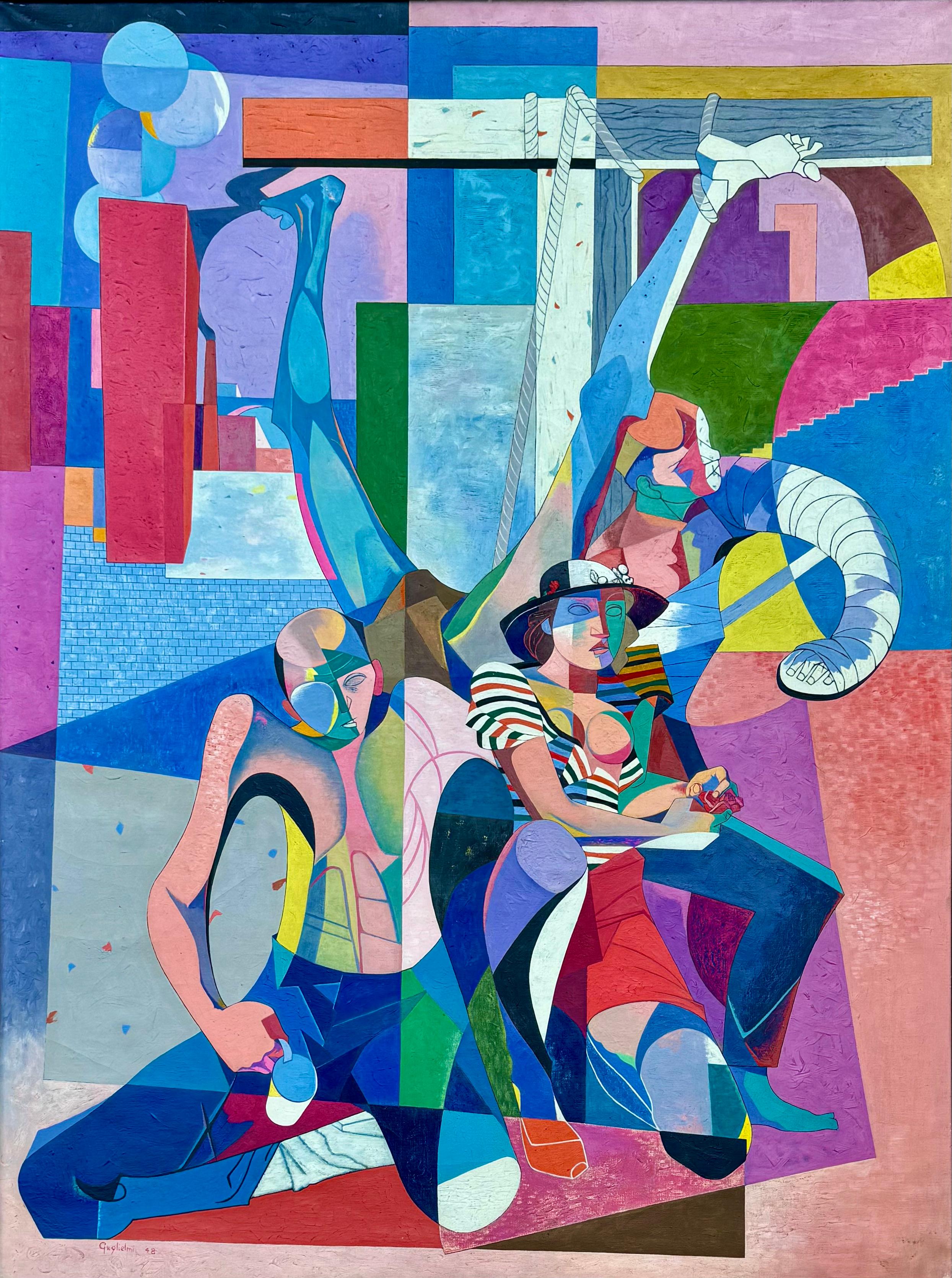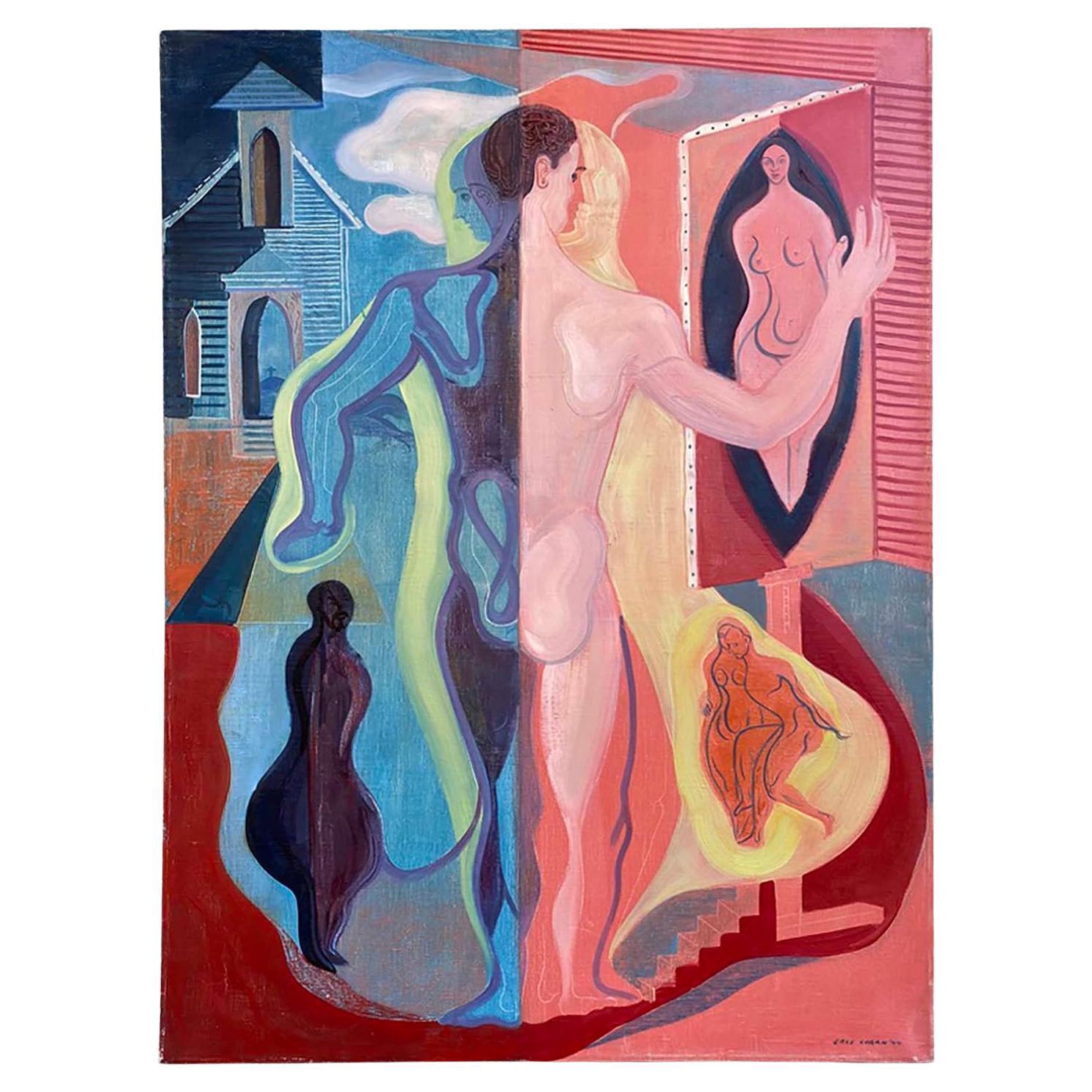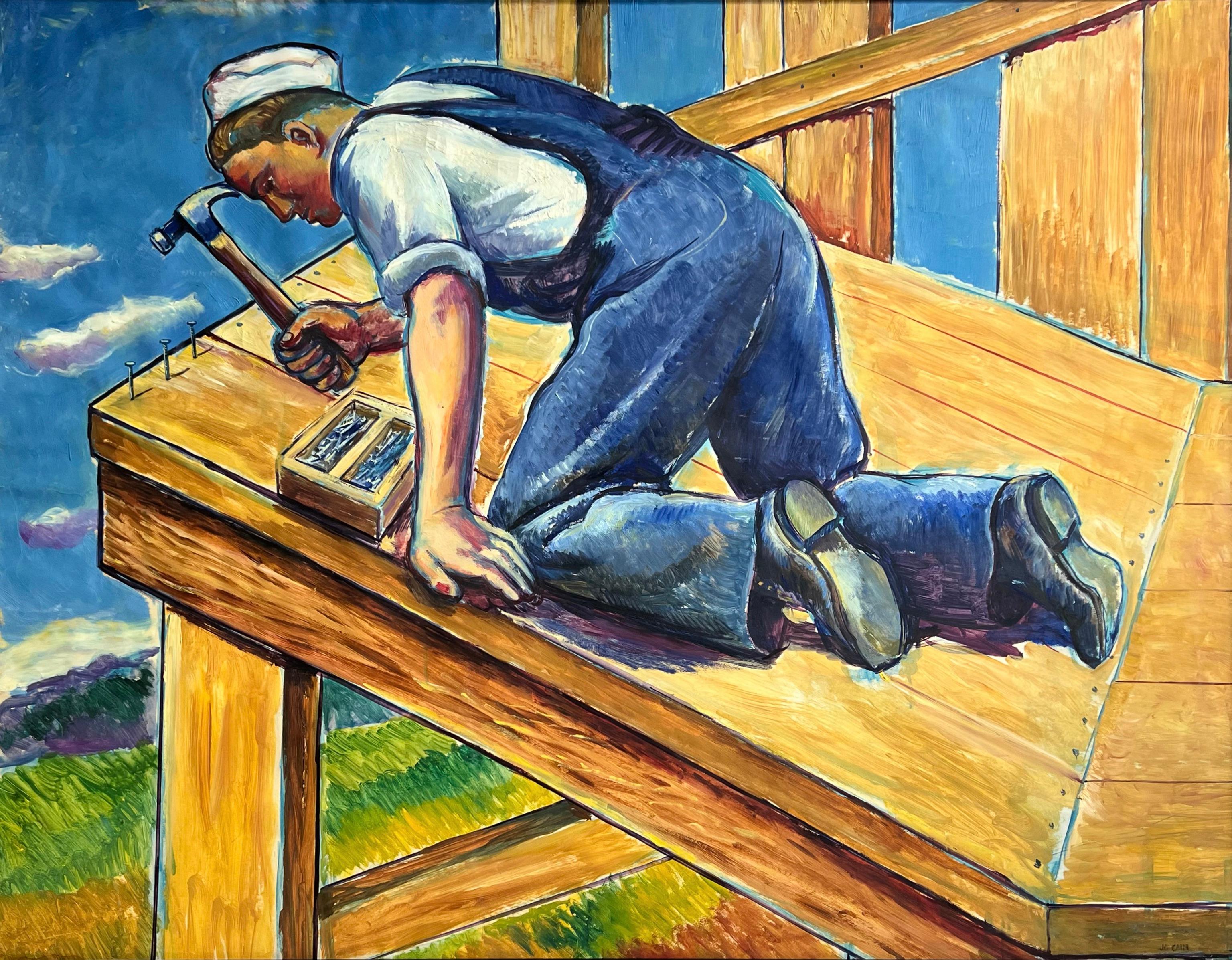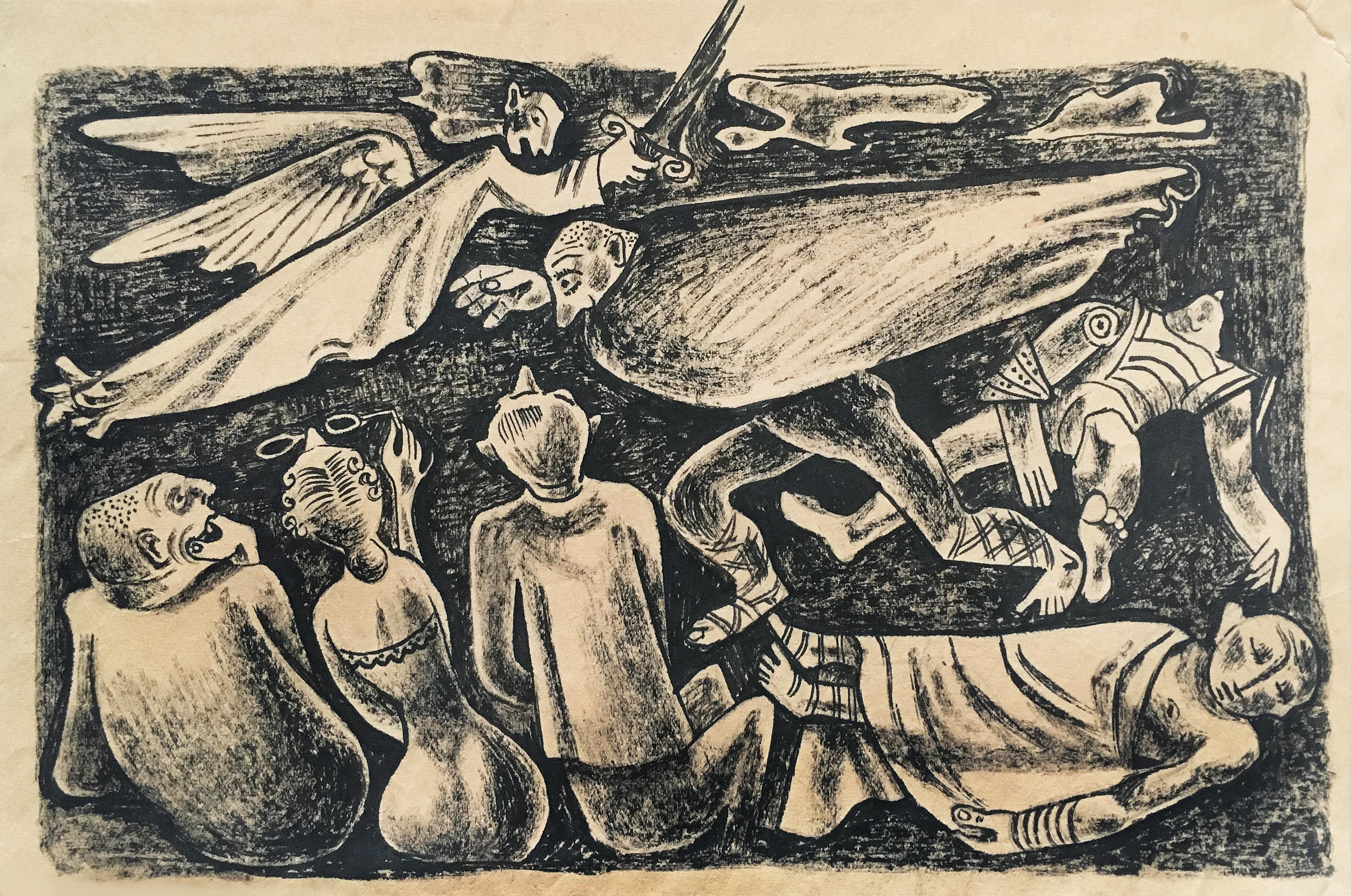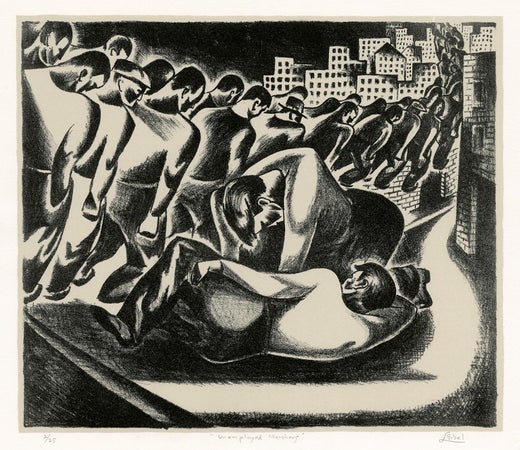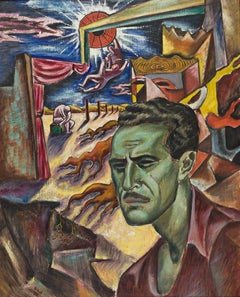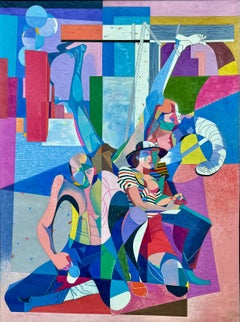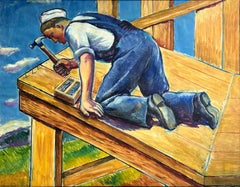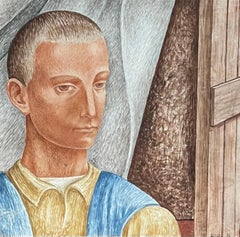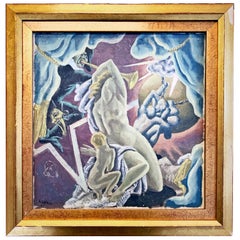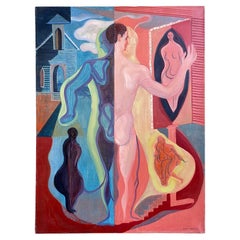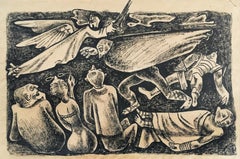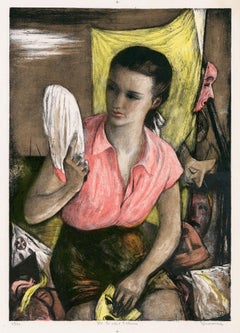Leon Bibel"Shattered" WPA Mid 20th Century Modernism American Scene Surrealism Figurative1937
1937
About the Item
- Creator:Leon Bibel (1913 - 1995)
- Creation Year:1937
- Dimensions:Height: 28 in (71.12 cm)Width: 24 in (60.96 cm)
- Medium:
- Movement & Style:
- Period:
- Condition:
- Gallery Location:New York, NY
- Reference Number:1stDibs: LU115629674372
Leon Bibel
Leon Bibel, a painter, printmaker and sculptor, was born in Poland in 1913 but moved with his family to San Francisco as a child. He trained at the California School of Fine Arts and received a scholarship to study under the German Impressionist Maria Riedelstein. He worked in collaboration with Bernard Zackheim, a student of Diego Rivera, to create frescoes for the San Francisco Jewish Community Center and the University of California Medical School. In 1936, Bibel moved from California to join the Federal Art Project of the New York City Work Projects Administration. He was assigned to the Graphic Art Project and the Easel Project at Harlem Art Center. He also taught at both PS 94 Kings College School and Bronx House in New York City. Bibel’s program in the WPA ended in 1941 and he moved with his wife to South Brunswick, New Jersey, ceasing his artistic pursuits to support his family. He resumed his artistic work in the early 1960s and continued to explore the mediums of painting and sculpture until his death. A constant innovator, Bibel experimented with diverse printmaking mediums. His work is distinguished by its boldly conceived, dramatic composition and passionately executed expressionist renderings. Bibel's parents immigrated from Poland and he remained staunchly pacifist, even throughout WWII. Much of his work during this period focused on the destructiveness of war and the consequent suffering and alienation of humankind. An artist of the people, his work is imbued with a sense of humanity and a concern for social justice and the plight of the working man. Bibel’s numerous exhibitions include the solo exhibition at Newark Museum in 1966, Jersey City Museum in 1967, Hunterdon Art Museum, Rutgers State University and New Jersey State Museum in 1978. He has also exhibited at Rider College, in 1983, Rutgers Hillel Foundation from 1985–86. His work is held in the permanent collections of the Metropolitan Museum of Art, the Museum of Fine Arts in Boston, the Newark Museum, the Zimmerli Art Museum of Rutgers, the Amon Carter Museum of American Art, the Klutznick Museum and the New Brunswick State Theater, as well as many corporate and private collections.
- ShippingRetrieving quote...Shipping from: Pawling, NY
- Return Policy
More From This Seller
View All1930s American Modern Figurative Paintings
Canvas, Oil
1940s American Modern Abstract Paintings
Canvas, Oil
1930s American Realist Figurative Drawings and Watercolors
Paper, Gouache
1940s American Realist Figurative Paintings
Canvas, Oil
1930s American Realist Landscape Drawings and Watercolors
Paper, Watercolor
1930s American Modern Figurative Paintings
Egg Tempera, Board
You May Also Like
Vintage 1940s American Art Deco Paintings
Paint
Vintage 1940s American Mid-Century Modern Paintings
Canvas, Wood, Paint
1940s Surrealist Figurative Drawings and Watercolors
Paper, Ink
1940s American Modern Figurative Prints
Lithograph
1950s Cubist Abstract Paintings
Canvas, Oil
1950s American Modern Still-life Paintings
Masonite, Oil
Read More
Ludwig Bemelmans Captures the Thrilling Sight of Coney Island at Night
The ‘Madeline’ creator and Carlyle Hotel legend was in a New York state of mind in the 1940s when he produced this exuberant and rare oil painting.
Mid-Century Americans Didn’t Know Antonio Petruccelli’s Name, but They Sure Knew His Art
The New York artist created covers for the nation’s most illustrious magazines. Now, the originals are on display as fine art.
